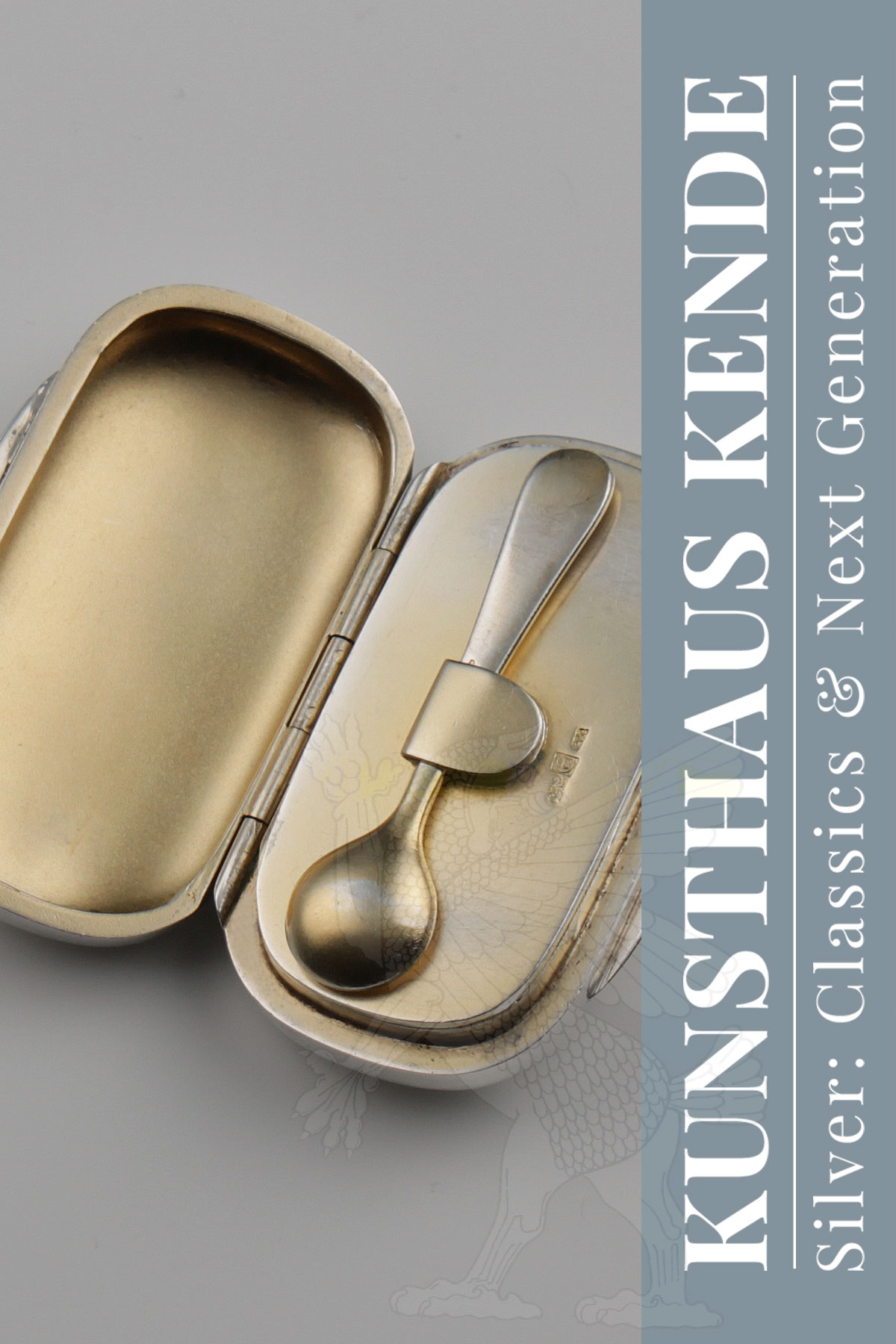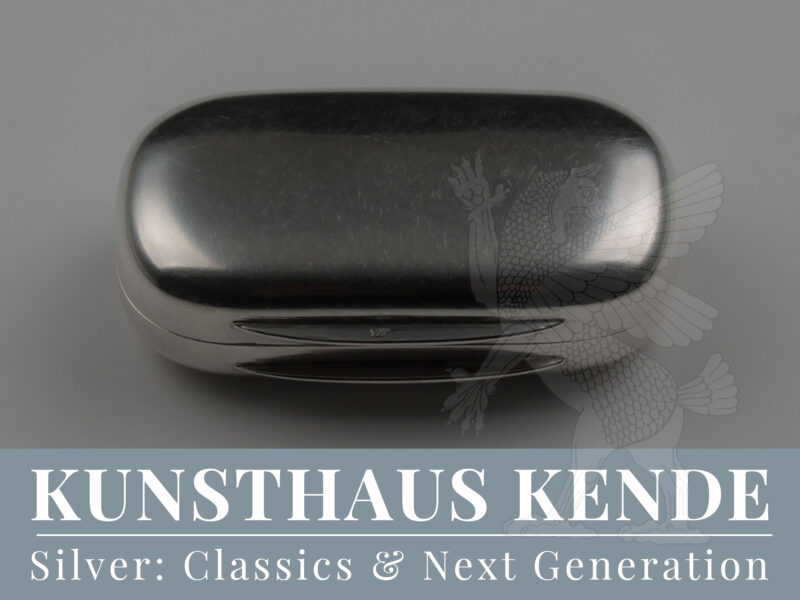Item number: 59070
A very rare Art Déco 800 grade silver cocaine box with spoon,
Pforzheim 1920 by Louis Kuppenheim
The centrally opening box with integrated inner lid, which has a holder for the spoon. Underneath, a separate compartment for the substance itself. The body rounded, probably to make it easier to reach the last remains with the spoon, and gilded on the inside. Inside hallmarked with fineness and company mark, the spoon not hallmarked. Both also bear the Viennese import hallmark for foreign silverware, which was in use from 1902.
A very rare and cultural-historically interesting object in authentic condition, which is emblematic of the hedonistic, wealthy upper class of the “Golden Twenties”. Partial rubbing of the gilding on the spoon and the lid around the spoon holder show that the object was indeed in frequent use. Especially in silver, cocaine boxes from this period are extremely rare, and it is a stroke of luck that even the original spoon has been preserved here. With the prohibition of the use of cocaine in the late Weimar Republic, such boxes were no longer produced and often melted down.
Length: 5.3 cm / 2.08“, width: 3.2 cm / 1.25“, height: 1.7 cm /0.66“, length (spoon): 4.7 cm / 1.85“;
Total weight: 47.9 g / 1.54 oz
The silverware factory Louis Kuppenheim
The Jewish goldsmith Louis Kuppenheim (1824 – 1889) founded the company of the same name in Pforzheim in 1857. At this time, Pforzheim was one of the leading centres of German goldsmithing. The company soon makes a name for itself for high-quality work, which necessitates several moves to larger premises. After Louis Kuppenheim’s death, his three sons take over the management. In addition to the business in Pforzheim, a branch is opened in Paris in 1900, which brings the international breakthrough and makes the company’s products known in North and South America, Europe and Great Britain. At its peak, the silverware factory – now in its third generation – employs around 200 people around 1925, including specialists in their field such as goldsmiths and silversmiths, enamellers, enamel painters and engravers.
Like many other silversmithies and goldsmithies, the economic recession of the early 1930s brought the silverware factory Louis Kuppenheim into economic difficulties, which finally led to its dissolution in 1939.
The Louis Kuppenheim silver factory specialised in the production of prestigious accessories for a fashion-conscious clientele such as cigarette boxes, match cases, powder boxes, business card boxes, cigarette mouthpieces through to walking stick handles, belt buckles or opera bags. One of Louis Kuppenheim’s special fields was the artfully chasing and chiselling of boxes and cases as well as enamel works. In the quality of its work, the company was on a par with firms such as Georg Adam Scheidt in Vienna. The company took part in the World Exhibition in Paris in 1900, where it received a gold medal for an artistically crafted letter opener. Louis Kuppenheim became internationally famous for its enamel work in particular. Even though research has not yet been able to provide clear proof of this, it is very likely that Kuppenheim produced enamel for a number of outstanding manufacturers of jewellery and silverware.



![[:en]Greif Kunsthaus Kende[:]](https://kunsthaus-kende.de/wp-content/uploads/greif_kunsthaus-kende-238x300.png)

